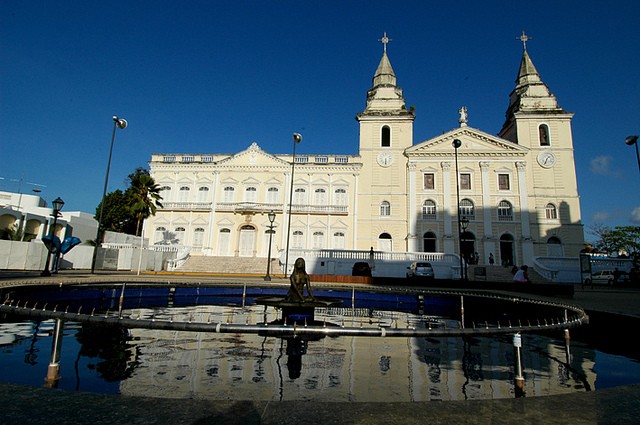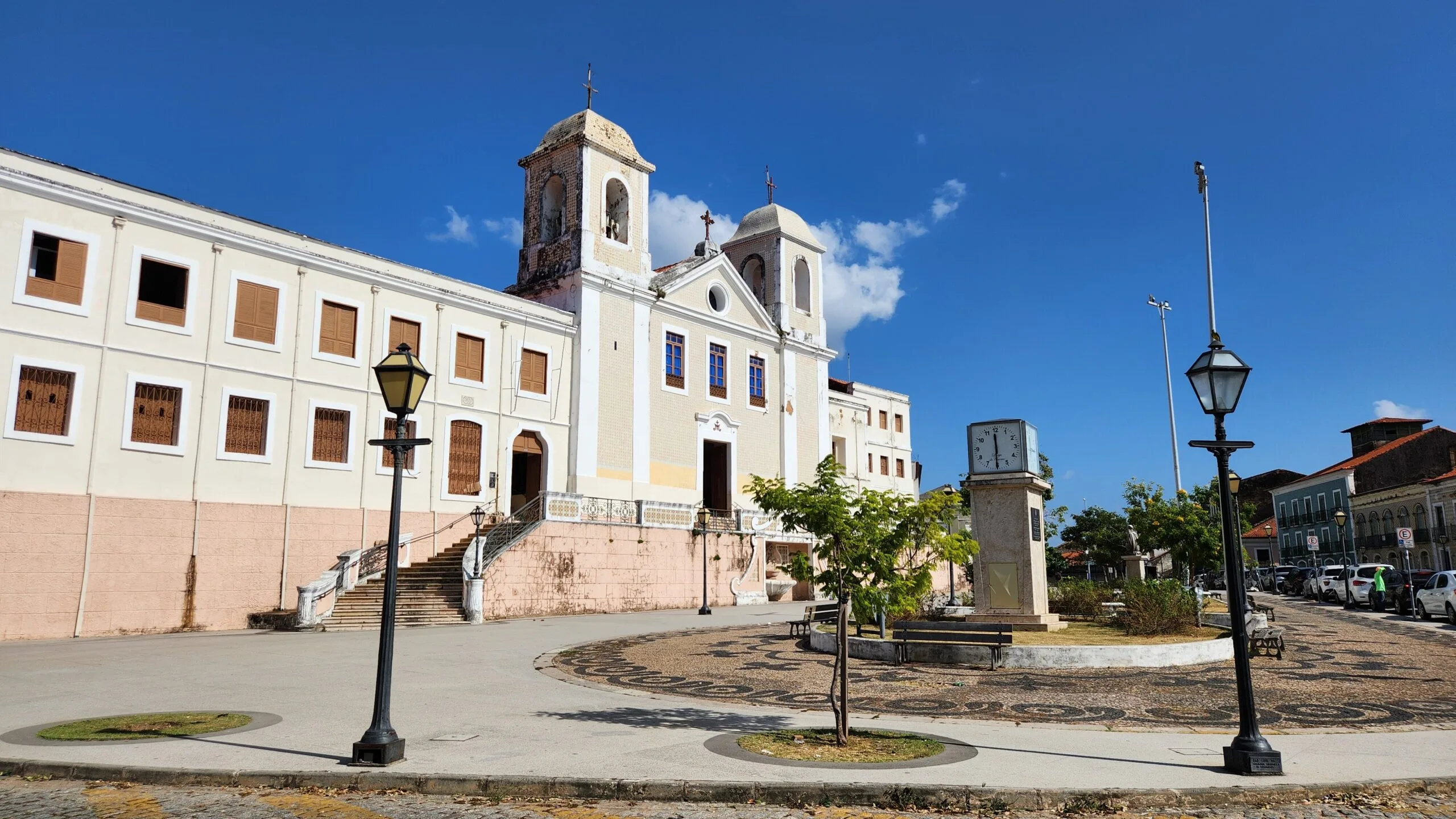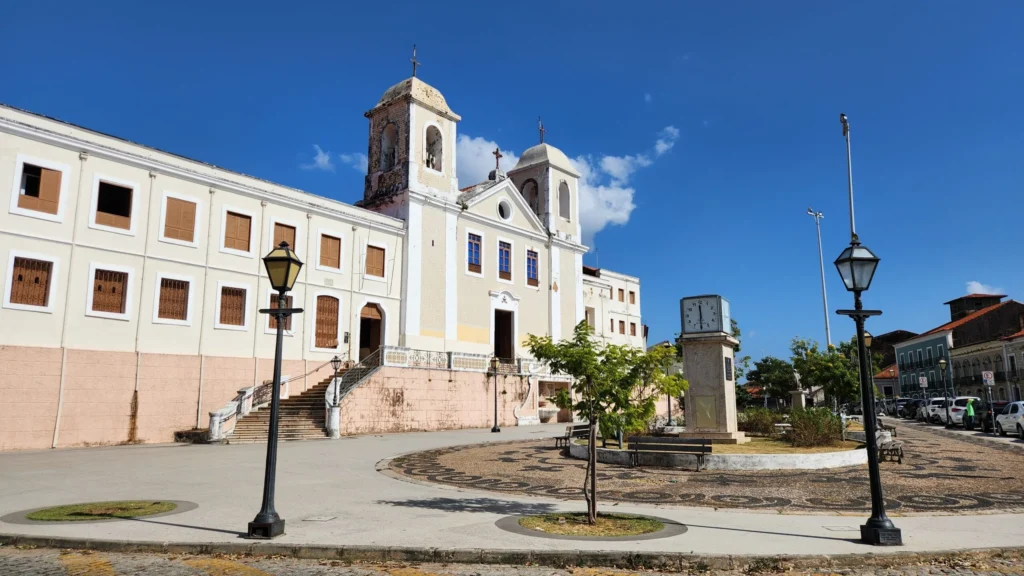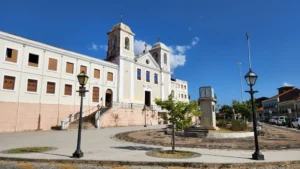Igreja da Sé or Church of Our Lady of Victory in São Luís do Maranhão
The Igreja da Sé, also known as the Church of Our Lady of Victory, is the Cathedral of São Luís do Maranhão. Located in the city’s Historic Centre, the Igreja da Sé is one of the region’s main tourist attractions. It’s worth admiring its façade and entering the temple to discover its riches.

Video about Sé Church in São Luís do Maranhão

History of the church
Built in 1762 by the Jesuits, the church was dedicated to Our Lady of Victory. It is said that the saint appeared at the Battle of Guaxenduba, where the Portuguese fought to expel the French from the lands of Maranhão. When the Portuguese were outnumbered, the saint encouraged them by turning sand into gunpowder and pebbles into projectiles. In the end, the Portuguese were able to drive out the French once and for all, which is why Our Lady of Victory is the patron saint of São Luís do Maranhão. The church of the cathedral was given its name and a Latin deed in reference to the saint.
Construction and characteristics
In 1922, with the construction of the second tower, the church took on the neoclassical style it still has today.
The adjacent building houses the Archdiocese of São Luís. If the façade is impressive enough, the interior of the church is even more beautiful, well lit and bright. The altar, all in gold, catches the eye, but the painting on the ceiling, in soft colours, is also of value. It’s very different from the churches of Minas Gerais, which are excessively decorated with gold.
High Altar
The cathedral’s greatest asset and highlight is its high altar, with 17th-century gilded carvings made with indigenous labour. It is one of the finest examples from the period of colonial Brazil and was listed by IPHAN in 1954.
The diocese of São Luís do Maranhão was created in 1677, extending from Ceará to Cabo Norte (Amapá), and was then dependent on the Patriarchate of Lisbon. In the early days of the diocese, the mother church of Nossa Senhora da Vitória was used as a cathedral.
The present cathedral building was not originally built to be the seat of the cathedral. In 1622, Jesuit priests Luís Figueira and Benedito Amodei began building the College and the Church of Our Lady of Light on the site of a chapel built by French Capuchins at the time of Equinoctial France.
In 1690 a new building was begun, designed by the Jesuit João Felipe Bettendorf, built with local labour and inaugurated in 1699. Next to the church was the Jesuit College, an important cultural centre of the region. In 1760 its bookshop contained 5,000 volumes.
The high altar is one of the finest pieces of wood carving found in São Luís, made entirely of polychrome wood, 10 metres high, 7.5 metres wide and 3.1 metres deep. The altar has been completely sanitised to remove termites and other insects, given artistic lighting and all the images restored.

Museum of Sacred Art in the Archiepiscopal Palace
Another new addition to the architectural complex is the installation of the Museum of Sacred Art in the Archiepiscopal Palace. Previously housed in a building attached to the Maranhão Historical and Artistic Museum, the museum reopens with a more contextual and attractive exhibition. All the pieces in the collection have been restored and given informative entries, making the visit more complete. The exhibition is divided into 13 rooms, which also tell a little about religious history and its importance in the construction of Maranhão.
In total, there are 400 pieces on display. The works are fully protected by bullet-proof tempered glass domes or behind display cases. A lift has also been installed to ensure accessibility. The space has been provided by the church for 30 years.
Conclusion
The Church of Sé and the Museum of Sacred Art are important cultural and historical landmarks in São Luís do Maranhão, reflecting the region’s rich religious and architectural heritage.
Publicações Relacionadas
History of João Lisboa Square in São Luís do Maranhão
João do Vale Theatre and Its Rich History
Tiles from São Luís do Maranhão: History, Art and Heritage
Discover the Charm of São Luis: Top Tourist Attractions
Arthur Azevedo Theatre and its Rich History
Historical and Artistic Museum of Maranhão Overview
Convento das Mercês: Historical Significance Unveiled
Ribeirão Fountain: A Historical Landmark in São Luís
Casa de Nhozinho: A Journey Through Maranhão Culture
Maranhão Natural History and Archaeology Research Centre
História da Igreja de São José do Desterro em São Luís do Maranhão
Rua do Giz in São Luís do Maranhão - History and Architecture
La Ravardière Palace: A Historic Monument in the City
History of the Founding of São Luís do Maranhão
This post is also on:
![]() Português
Português ![]() English
English ![]() Deutsch
Deutsch ![]() Español
Español ![]() Français
Français





















